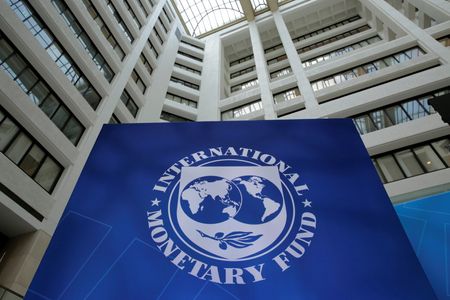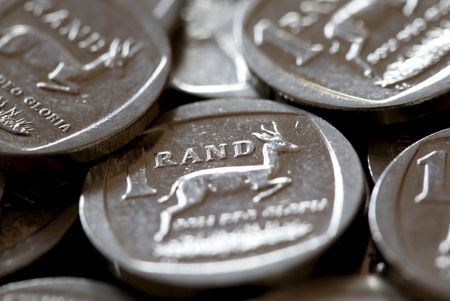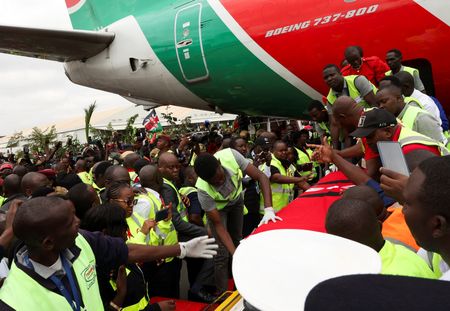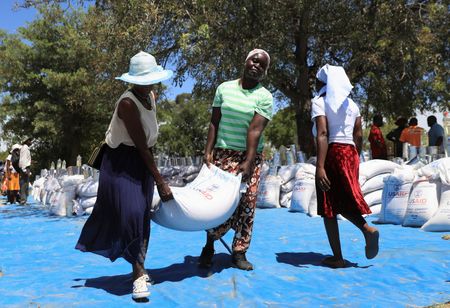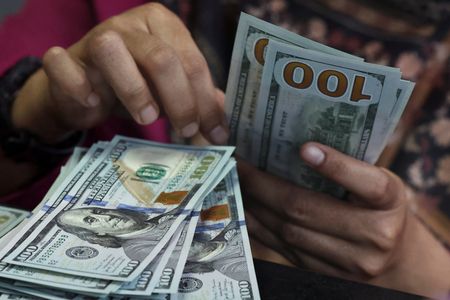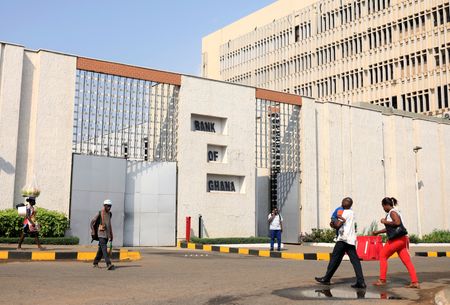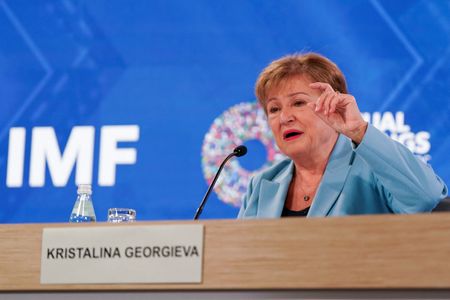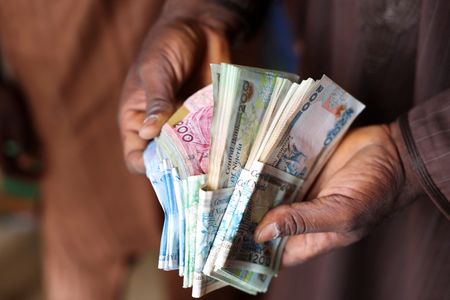By Colleen Goko and Karin Strohecker
JOHANNESBURG/WASHINGTON (Reuters) -Sub-Saharan African governments are paying more to borrow at home than abroad as they turn increasingly to domestic banks to plug financing gaps, deepening risks for lenders and squeezing private investment, the International Monetary Fund said on Thursday.
“The domestic cost of capital remains elevated across the region,” the IMF said in its Regional Economic Outlook, which was released during the annual meetings of the global lender and World Bank in Washington.
“Local financial markets are underdeveloped – characterized by shallow depth, fragmentation, illiquidity and high transaction costs and lending spreads.”
The IMF warned that new domestic public borrowing is “significantly more expensive than external borrowing” in many countries. Heavy reliance on banks is raising funding costs further and “crowding out private-sector investment.”
Domestic bank holdings of sovereign debt are “large and growing faster in sub-Saharan Africa than in the rest of the world,” it added, creating a “vicious potential feedback loop” in which weakening government finances threaten banks’ soundness, curbing credit and heightening fiscal stress.
Abebe Aemro Selassie, the director of the IMF’s African Department, told Reuters the shift to local funding was a double-edged sword.
“About half of total public debt is owed to domestic banks,” he said. “Access to external financing has not been readily available in recent years, but it is also a positive sign because, fundamentally, we want countries to be able to borrow in their own currency.”
Still, he cautioned that excessive domestic borrowing “can also create problems in the banking sector” if governments struggle to service debt.
MANY COUNTRIES TRYING TO AVOID DEBT TRAPS
African countries have been very cautiously returning to international markets since 2024, after many were effectively locked out in 2022 due to a surge in borrowing costs and increased economic risks.
The cost of borrowing has fallen from crisis highs, but many governments are still servicing past debts and seeking to avoid new debt traps.
Policymakers are now experimenting with a mix of domestic bond issuance, private placements, and multilateral loans to fund budgets and development projects.
Beyond fiscal repair, the IMF called for stronger debt-management frameworks and credible, transparent data to attract long-term investment. It also urged more realistic expectations for “innovative” funding models such as blended-finance vehicles and debt-for-development swaps.
Total blended-finance flows to sub-Saharan Africa remain small – about $6 billion per year, the report found.
Transactions such as Ivory Coast’s 2024 debt-for-education swap and Gabon’s 2023 debt-for-nature swap are still rare and “comparatively small, typically below $1 billion per year globally.”
Selassie said mobilizing private and domestic resources would be vital as aid declines.
“One of the things that could be considered is trying to entice more private financing,” he said.
“This is a very complex area … but it’s an important way to start supplementing domestic savings.”
(Reporting by Colleen Goko in Johannesburg and Karin Strohecker in Washington; Editing by Paul Simao)

